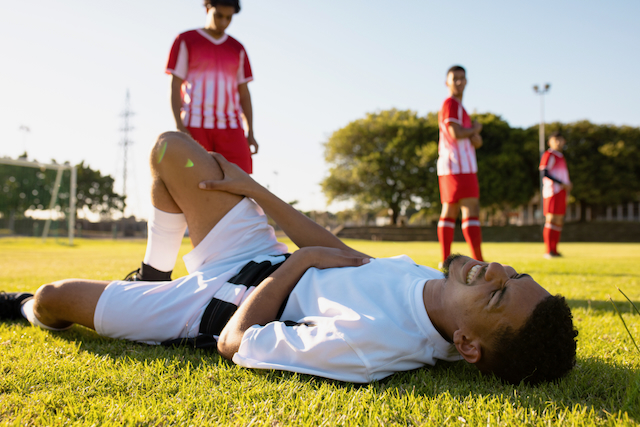Improving one’s fitness is often at the top of any New Year’s resolutions list. Whether you hire a trainer, run three days a week, or sign up for a gym membership, you can’t go wrong. Exercise is vital to building strength and boosting cardiovascular health.
But exercising too much too fast is a recipe for being sidelined with an injury. UVM Associate Professor Karen C. Westervelt, PT, PhD., who teaches in UVM’s Integrative Health and Wellness Coaching Program, offers advice on preventing sports-related injuries.
Why You Get Injured

Injuries are common among beginners as they often want to see results quickly. “Our bodies are very good at responding to the work we ask of them, but they need time,” Westervelt said in a recent interview with Peloton. “Asking a muscle to do more work than it is ready to do can result in muscle strain.”
Even experienced athletes get injured, but often for different reasons.
“Experienced athletes are more likely to experience overuse injuries and injuries related to muscle imbalances. Your body and your mind benefit from adding some variety to your workout,” she says.
Training errors can be the culprit for injuries in beginners and experienced athletes. Mistakes include poor technique, doing too much too fast, not taking adequate time for recovery, and always doing the same workout and not cross-training, Westervelt adds.
“Doing the same workout repeatedly can result in some muscles getting very strong and others not being used as much,” she says. “This can create an imbalance in strength across the joint, which can contribute to injury and pain.”
How to Stay Injury-Free
The good news is that there are techniques to keep injuries at bay.
“There is no way to completely prevent injury, but there are some things you can do to help stay injury-free,” Westervelt says. “First, do a dynamic warm-up before your workout. Second, have a great workout. Third, do static stretches after your cool-down.”
She adds that essential muscles to stretch after your cool-down are quads, hamstrings and erector spinea, a set of muscles that straighten and rotate the back.
Listening to your body, staying hydrated, cross-training, and making time to warm up and cool-down are key to a successful fitness routine.
“Know your limits,” Westervelt says. “Mix it up!”




